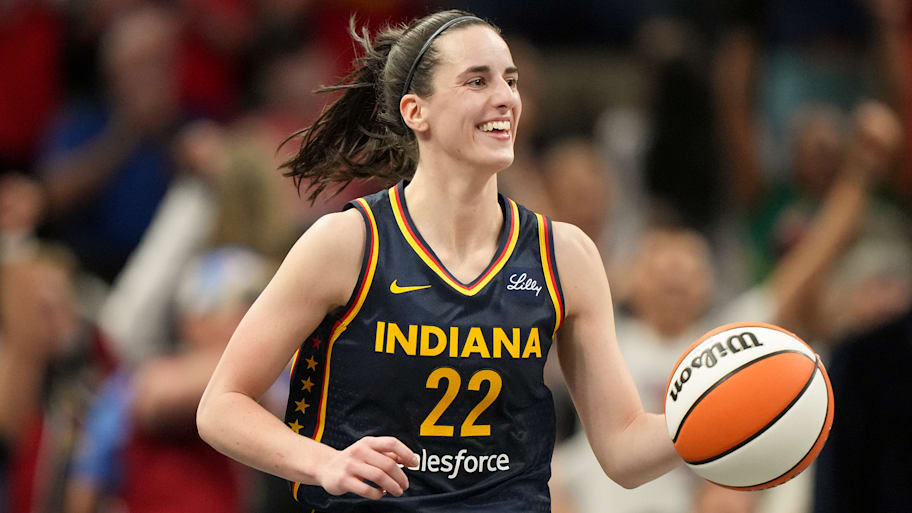The roughly 17,000 fans of the Kansas City Chiefs who filed into Arrowhead Stadium for a masked and socially distanced start to the NFL season Thursday were prohibited from wearing headdresses or war paint amid a nationwide push for racial justice following the police-custody death of George Floyd in Minneapolis.
The move by the reigning Super Bowl champions has been received by Native Americans as a good first step, but it also frustrated some of the franchise’s longtime fans, including some who were in the stands as the team became the first to take the field in front of a crowd — albeit a smaller than normal one — during the coronavirus pandemic.
“I think it’s a little overboard, but I mean, we’ve got to listen to the rules,” said Kory Noe, who owns a car lot in Stafford, Missouri. “I’m a big fan of the tomahawk chop. It’s just been the Chiefs’ signature song since they started and it’s going to be hard not to do it if they take it away.”
In fact, the Chiefs are pushing a subtle change to the tomahawk chop celebration amid complaints that it’s racist. The plan is for cheerleaders to use a closed first instead of an open palm to signal the beating of a drum. The team typically has a celebrity or other guest of honor beat a large drum before the start of the game.
“We’ve started to work and started some discussions about trying again to educate and make people aware of the sacred position of the drum in the American Indian culture, but also that it’s seen as sort of the heartbeat of that culture,” Chiefs president Mark Donovan said “It’s easy to latch onto that, say, ‘OK, it’s kind of the heartbeat of the stadium too.’”
The changes in Kansas City came after several professional franchises, including the Cleveland Indians in Major League Baseball, have been pushed to drop racist imagery. The biggest victory for supporters of Native Americans may have come before the start of the football season, when the Washington franchise dropped Redskins as its nickname.
“I see where the problem is with having (a headdress) and doing the face paint and everything, because you’re not a part of their culture,” said Jackson Allen, a 24-year-old sales rep from Springfield, Missouri. “It’s offensive. I can see the problem.”
The Chiefs have worked with tribes for the past six years to distance themselves from imagery that could be considered racist. Each season, a game is dedicated to Native American heritage.
Students at nearby Haskell Indian Nations University in Lawrence, Kansas, were among those who demanded changes.
“Using this mascot and having this fan base of predominantly white people wearing face paint and headdresses and doing the tomahawk chop, and it energizes them and gives them this sense of power, and then thinking there is nothing wrong with doing that is just mind boggling to me,” said William Wilkinson, a 22-year-old business major from Madison, Wisconsin, who is Navajo, Cherokee, Mandan, Hidatsa and Arikara.
Wilkinson also said the Chiefs should change their nickname, although the franchise has maintained for years that it is named in honor of H. Roe Bartle. The philanthropist and two-term Kansas City mayor, whose nickname was “Chief,” was instrumental in helping to relocate the team from Dallas.
Ty Rowton, a self-described superfan who goes to games as the X-Factor, often attends games with a foam Arrowhead on his head, beads and a cape signed by players. But he has made one change to his costume: Instead of face paint, Rowton affixed duct tape with Bible verses on his face.
Rowton said he was stopped by security but eventually allowed to enter. He thinks the team’s changes are an overreaction. He also thinks the team should keep the tomahawk chop.
“It is something that gets us riled up together and that we do as one. It has never been meant to be disrespectful,” he said.
Gaylene Crouser, executive director of the Kansas City Indian Center, said it’s wrong to use “a race of people as a mascot.”
“It’s been in Ohio as early as the mid-1850s at least, brought in as an ornamental plant because of its unique foliage and white flowers,” Gardner said. “It was actually planted in people’s landscaping, and it has been spreading.”
“It has always been swept under the rug,” she said, “but because the Washington team was leaned on so hard that they made the change, now some of the other ones are starting to feel the heat. I hope this is the beginning of the end of this acceptable racism.”
About 30 minutes before kickoff Thursday night, the Chiefs lined up along the goal line in a show of solidarity for social justice initiatives while a video played on the screens in each end zone of Arrowhead Stadium. Meanwhile, some fans spent portions of the pregame doing the tomahawk chop, including the accompanying war chant. During the national anthem, only one Chiefs player knelt, and several held a hand over their heart, while the Houston Texans remained in their locker room. Prior to the pregame coin flip at midfield, players from each team interlocked arms during a moment of silence, which was intermittently broken by a smattering of boos from fans.
Nationwide calls to address racial issues have become more prevalent since Floyd died May 25 after a white Minneapolis police officer pressed his knee into the handcuffed Black man’s neck for nearly eight minutes during an arrest. Four officers were fired and have been charged in Floyd’s death, and protests have continued to grip the nation.














































